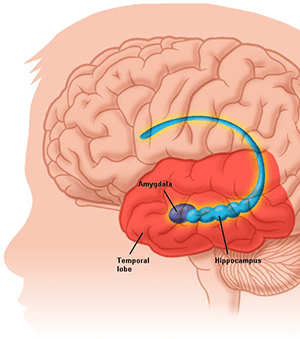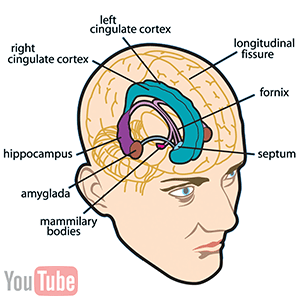A doodle is an unfocused drawing made while a person’s attention is otherwise occupied. They are simple drawings that can have concrete representational meaning or may just be abstract shapes.
Doodling can aid a person’s memory by expending just enough energy to keep one from daydreaming, which demands a lot of the brain’s processing power, as well as from not paying attention. Thus, it acts as a mediator between the spectrum of thinking too much or thinking too little and helps focus on the current situation.
read more »
Doodle
Marc Newson
Marc Newson (b. 1963) born in Australia, and now based in London, is an industrial designer who works in aircraft design and product design. He incorporates a design style known as biomorphism to his various designs. This style uses smooth flowing lines, translucency, transparency and tends to have an absence of sharp edges.
He is currently adjunct professor in design at Sydney College of the Arts and is the creative director for Qantas. He co-founded and owns the Ikepod watch company. One of his three Lockheed Lounge chairs sold for $968,000 at Sotheby’s in 2006. Every year he races one of his four vintage sports cars – an Aston Martin, a Lamborghini, a Ferrari and a Cisitalia, in the Italian Mille Miglia.
Hare’s Psychopathy Checklist
Robert Hare (b. 1934) is a Canadian researcher renowned in the field of criminal psychology. He developed the Psychopathy Checklist (PCL) and Psychopathy Checklist Revised (PCL-R), used to diagnose cases of psychopathy and also useful in predicting the likelihood of violent behavior, and is professor emeritus of the University of British Columbia where his studies center on psychopathology and psychophysiology.
In contemporary research and clinical practice, Robert D. Hare’s Psychopathy Checklist-Revised (PCL-R) is the psycho-diagnostic tool most commonly used to assess psychopathy.
read more »
Amygdala Hijack
Amygdala [uh-mig-duh-luh] hijack is a term coined by psychologist Daniel Goleman in his 1996 book ‘Emotional Intelligence: Why It Can Matter More Than IQ.’ Goleman uses the term to describe emotional responses from people which are out of measure with the actual threat because it has triggered a much more significant emotional threat. The brain processes stimuli by having the thalamus direct sensory information to the neocortex (the ‘thinking brain’). The cortex then routes the signal to the amygdala (the ’emotional brain’) for the proper emotional reaction. The amygdala then triggers a flood of peptides and hormones to create emotion and action.
Perceived potential threats, however, can disrupt this smooth flow; the thalamus bypasses the cortex and routes the signal directly to the amygdala, which is the trigger point for the primitive fight-or-flight response; when the amygdala feels threatened, it can react irrationally and destructively. Goleman states that ‘Emotions make us pay attention right now – this is urgent – and give us an immediate action plan without having to think twice. The emotional component evolved very early: Do I eat it, or does it eat me?’ The emotional response ‘can take over the rest of the brain in a millisecond if threatened.’ An amygdala hijack exhibits three signs: strong emotional reaction, sudden onset, and post-episode realization that the reaction was inappropriate.
Amygdala
The amygdala [uh-mig-duh-luh] (Latin: ‘almond’) are almond-shaped groups of nuclei (clusters of neurons) located deep within the temporal lobes of the brain in complex vertebrates, including humans. Shown in research to perform a primary role in the processing and memory of emotional reactions, the amygdalae are considered part of the limbic system.
The amygdala sends impulses to the hypothalamus for activation of the sympathetic nervous system to trigger a fight or flight response, to the thalamic reticular nucleus for increased reflexes, to the nuclei of the trigeminal nerve and the facial nerve, and to the ventral tegmental area, locus coeruleus, and laterodorsal tegmental nucleus for activation of dopamine, norepinephrine and epinephrine (adrenalin).
read more »
Limbic System
The limbic system (or Paleomammalian brain) is a set of brain structures including the hippocampus, amygdala, anterior thalamic nuclei, septum, limbic cortex and fornix, which seemingly support a variety of functions including emotion, behavior, long term memory, and olfaction (smell). The term ‘limbic’ comes from the Latin limbus, for ‘border’ or ‘edge.’ Some scientists have suggested that the concept of the limbic system should be abandoned as obsolete, as it is grounded more in transient tradition than in facts.
The limbic system operates by influencing the endocrine system (hormones) and the autonomic nervous system (visceral functions, e.g. breathing, urinating, salivating). It is highly interconnected with the nucleus accumbens, the brain’s pleasure center, which plays a role in sexual arousal and the ‘high’ derived from certain recreational drugs. In a 1954 experiment, rats with metal electrodes implanted into their nucleus accumbens as well as their septal nuclei repeatedly pressed a lever activating this region, and did so in preference to eating and drinking, eventually dying of exhaustion.
read more »
The Dragons of Eden
The Dragons of Eden: Speculations on the Evolution of Human Intelligence is a Pulitzer Prize winning 1977 book by Carl Sagan. In it, he combines the fields of anthropology, evolutionary biology, psychology, and computer science to give a perspective of how human intelligence evolved.
The opening quote is by Greek philosopher Plotinus: ‘Mankind is poised midway between the Gods and the Beasts.’
read more »
Triune Brain
The triune brain is a model of the evolution of the vertebrate forebrain and behavior proposed by the American physician and neuroscientist Paul D. MacLean. MacLean originally formulated his model in the 1960s and propounded it at length in his 1990 book ‘The Triune Brain in Evolution.’ The triune brain consists of the reptilian complex, the paleomammalian complex (limbic system), and the neomammalian complex (neocortex), viewed as structures sequentially added to the forebrain in the course of evolution.
The triune brain hypothesis became familiar to a broad popular audience through Carl Sagan’s Pulitzer prize winning 1977 book ‘The Dragons of Eden.’ Though embraced by some psychiatrists and at least one leading affective neuroscience researcher, the model never won wide acceptance among comparative neurobiologists. Comparative evolutionary neuroanatomists currently regard its claims about brain evolution to be outdated.
read more »










